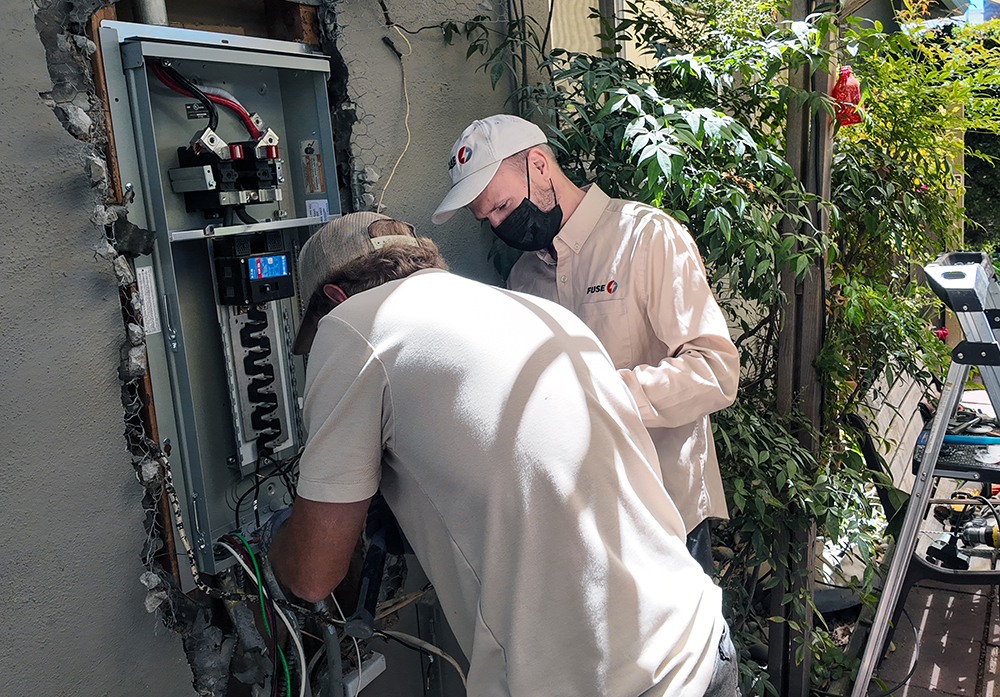
It’s a fact that safety rules are made for a solid reason. Electrical fires, broken appliances and other hazards that hide in your electrical system can be really severe. To avoid them and feel safe at your home there are some devices that are installed right into your electrical panel, AFCIs being one of them. Let’s get down to what they are and what makes them a must-have in your home.
What is an AFCI?
What are AFCI breakers? An Arc Fault Circuit Interrupter (shortly AFCI) is a type of a circuit breaker. It’s designed to detect electrical arc faults before they cause fires. These devices can recognize arc patterns that are common for dangerous situations. If such a pattern is detected, AFCI shuts off power to prevent overheating and ignition. To learn even more about breakers and how they work read our article!
Why is AFCI Used?
First of all, arc fault circuit interrupters are essential for fire prevention. Damaged wires, loose connections, or aging electrical components can cause those fires while staying unnoticed deep in your electrical system. By stopping hazardous arcing, AFCIs protect homes from electrical fires, making them a crucial part of modern electrical systems.
How is an Arc Fault Detected?
Basically, the current in your system has a certain wave form. The arc fault circuit interrupters are used for monitoring these waveforms to see if there are any irregular patterns that indicate arcs. They use advanced electronics to differentiate between normal arcs (e.g., from switches) and dangerous arcs that could lead to fires.
How Does an Arc Fault Circuit Breaker Work?
The AFCI is directly connected to your electrical system. It reads the signals to analyze current flow for detecting dangerous arc faults. What is an arc fault? According to the definition, it’s a high power discharge of electricity between two or more conductors. When one is detected, AFCI trips the circuit, cutting off power. It stops heat buildup before it causes ignition. This proactive response helps prevent electrical fires before they start.
When to Use GFCI or AFCI?
There are different types of breakers to protect your home. Use GFCI (Ground Fault Circuit Interrupter) and AFCI in proper places to achieve the maximum safety. GFCI and AFCI breakers can make different zones with different requirements protected.
- AFCI. Made to protect your living room, bedroom and hallways against arc faults.
- GFCI. Prevents electric shock from ground faults, typically required in kitchens, bathrooms, and outdoor areas.
- Dual Function Breakers. When used together, AFCI and GFCI provide enhanced protection for comprehensive safety.
What Are the Different Types of AFCI Circuit Breakers?
- Branch/Feeder AFCIs. Installed at the panel, covering the entire circuit.
- Combination AFCIs. Detects both series and parallel arcs for broader protection.
- Outlet AFCIs. Installed at outlets to protect downstream devices.
- Dual-Function AFCIs. Made to create protection against arc and ground faults.
Are There Any Guidelines for Wiring and Installation?
There are some AFCI breaker requirements to follow for successful installation.
- Follow National Electrical Code (NEC) requirements.
- Install AFCIs in designated areas like bedrooms and living spaces.
- Use dedicated AFCI breakers in new constructions or major renovations.
- Avoid mixing AFCI circuits with dimmers or appliances that cause nuisance tripping.
What is the Cost of an AFCI Breaker?
In store you can buy an AFCI breaker for about $30 to $50 per unit. However, the installation of arc fault circuit interrupters usually costs from $100 to $300 per breaker. But remember, that prices are taken on average and the final price always depends on various factors. Contact us via (669) 666-9219 or support@fuseservice.com to find how much your project will cost from an expert estimator. Also check out 10 questions to ask before hiring an electrician if it’s your first time.

Why is It Important to Install an AFCI Breaker in Your Home?
It’s all about your safety. With arc fault circuit interrupters you can find a peace of mind, since they are made to protect your home against electrical fires, enhance safety, and ensure compliance with modern electrical codes. Arc fault breaker tripping when any of these hazards appears and shut off the electricity to stop them. You can find out more about home safety with our article about outlets and why they don’t work.
Where Are They Required to Be Installed According to Electrical Safety Standards?
The NEC mandates AFCIs in residential areas such as:
- Bedrooms
- Living rooms
- Dining rooms
- Hallways
- Laundry areas
Conclusion
It’s crucial to protect your home from any accidents and electrical fires are not the exception. Updating your home with AFCIs ensures safety and reduces fire risks. You can install it by yourself but it’s highly recommended to call an electrician. A specialist with knowledge of local electrical regulations, experience and certified education will provide safe and reliable results. Visit our YouTube and Instagram pages to see what we are capable of!

825 w
